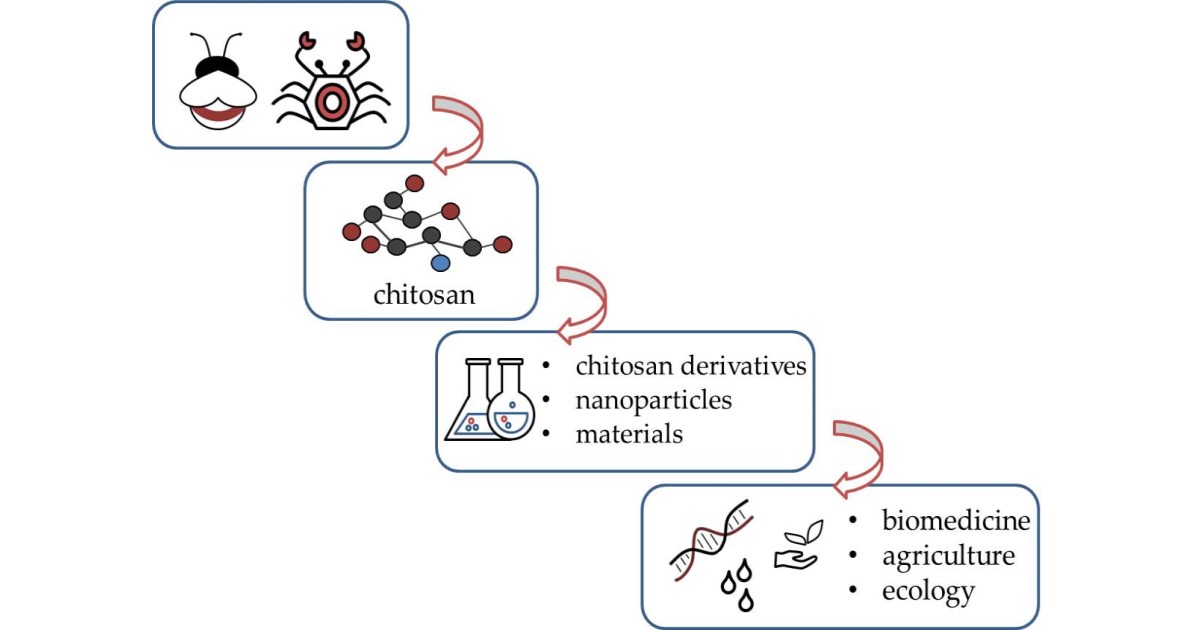Chitosan, Its Derivatives and Nanoparticles Based on Chitosan: Synthesis, Characterization and Application, 2nd Edition
A special issue of Polymers (ISSN 2073-4360). This special issue belongs to the section "Biomacromolecules, Biobased and Biodegradable Polymers".
Deadline for manuscript submissions: 15 August 2024 | Viewed by 1180

Special Issue Editors
Interests: biopolymers; chitosan; chitosan derivatives; nanoparticles; antibacterial activity; fungicidal activity
Special Issues, Collections and Topics in MDPI journals
Interests: polysaccharides; chitosan; chitosan derivatives; nanoparticles; antimicrobial activity
Special Issues, Collections and Topics in MDPI journals
Special Issue Information
Dear Colleagues,
The scientific community is now focusing on the use of eco-friendly materials to reduce the environmental impact of synthetic materials. Eco-friendly materials include polymers of natural origin. Chitosan is one such promising biopolymer with a wide range of applications. It has unique properties, such as biodegradability, biocompatibility, low toxicity, antimicrobial activity, and source availability. The presence of hydroxyl and amino functional groups in the chitosan molecule enables chitosan to be chemically modified, expanding its potential applications. Nanomaterials have many applications due to their superior physical and chemical properties compared to bulk materials. These properties are due to the increased surface-to-volume ratio and surface energy of the miniature particles. Chitosan nanoparticles have high functionalization potential and drug-loading capability and antimicrobial properties while remaining biodegradable and biocompatible.
This Special Issue "Chitosan, Its Derivatives and Nanoparticles Based on Chitosan: Synthesis, Characterization and Application" will focus on various fundamental and applied research of chitosan, its derivatives and nanoparticles and their biomedical and biotechnological applications, including in agriculture.
Topics will include, but are not limited to, the following:
- Chitosan derivatives, synthesis, characterization and applications;
- Chitosan-based nanoparticles, synthesis, characterization, and applications;
- Antimicrobial activity of chitosan and chitosan nanoparticles;
- Application of chitosan-based materials, including nanoparticles in biomedicine and agriculture.
Dr. Balzhima Shagdarova
Dr. Alla V. Il'ina
Guest Editors
Manuscript Submission Information
Manuscripts should be submitted online at www.mdpi.com by registering and logging in to this website. Once you are registered, click here to go to the submission form. Manuscripts can be submitted until the deadline. All submissions that pass pre-check are peer-reviewed. Accepted papers will be published continuously in the journal (as soon as accepted) and will be listed together on the special issue website. Research articles, review articles as well as short communications are invited. For planned papers, a title and short abstract (about 100 words) can be sent to the Editorial Office for announcement on this website.
Submitted manuscripts should not have been published previously, nor be under consideration for publication elsewhere (except conference proceedings papers). All manuscripts are thoroughly refereed through a single-blind peer-review process. A guide for authors and other relevant information for submission of manuscripts is available on the Instructions for Authors page. Polymers is an international peer-reviewed open access semimonthly journal published by MDPI.
Please visit the Instructions for Authors page before submitting a manuscript. The Article Processing Charge (APC) for publication in this open access journal is 2700 CHF (Swiss Francs). Submitted papers should be well formatted and use good English. Authors may use MDPI's English editing service prior to publication or during author revisions.
Keywords
- biopolymer
- chitosan
- chitosan derivatives
- nanoparticles
- composites
- antibacterial activity
- fungicidal activity
- biomedicine
- agriculture
Related Special Issue
Planned Papers
The below list represents only planned manuscripts. Some of these manuscripts have not been received by the Editorial Office yet. Papers submitted to MDPI journals are subject to peer-review.
Title: Chitosan based composite for oral applications
Authors: Martha Chuc-Gamboa; Fernando Aguilar-Perez
Affiliation: Universidad Autonoma de Yucatan
Title: Mimicking the physicochemical properties of the cornea: a low-cost approximation using highly available biopolymers
Authors: Juan Hernández; Concepción Panadero-Medianero; Macarena S. Arrázola; Manuel Ahumada
Affiliation: Centro de Nanotecnología Aplicada, Facultad de Ciencias, Ingeniería y Tecnología, Universidad Mayor, Camino La Pirámide 5750, Huechuraba, Santiago, RM, Chile.
Abstract: Corneal diseases represent a significant global health challenge, often resulting in blindness, where penetrating keratoplasty is the clinical gold standard. However, in cases involving compromised ocular surfaces or graft failure, osteo-odonto keratoprosthesis (OOKP) emerges as a vital yet costly and complex alternative. Thus, there is an urgent need to introduce soft biomaterials that mimic the corneal tissue, considering its translation's physicochemical, biological, and economic costs. This study introduces a crosslinked mixture of economically viable biomaterials, including gelatin, chitosan, and poly-D-lysine, mimicking corneal properties. The physicochemical evaluation of certain mixtures, specifically gelatin, chitosan, and poly-D-lysine crosslinked with 0.10% glutaraldehyde, demonstrates similarities in properties such as swelling, optical transmittance, and thermal degradation comparable to native corneas. Additionally, constructs fabricated with poly-D-lysine exhibit good cytocompatibility with fibroblasts at 72 h. These findings suggest that low-cost biopolymers, particularly those incorporating poly-D-lysine, mimic specific corneal characteristics and have the potential to foster fibroblast survival. While further studies are required to reach a final corneal-mimicking solution, this study proves that low-cost reagents in a biomaterial formulation can effectively replace and regenerate the corneal tissue.






